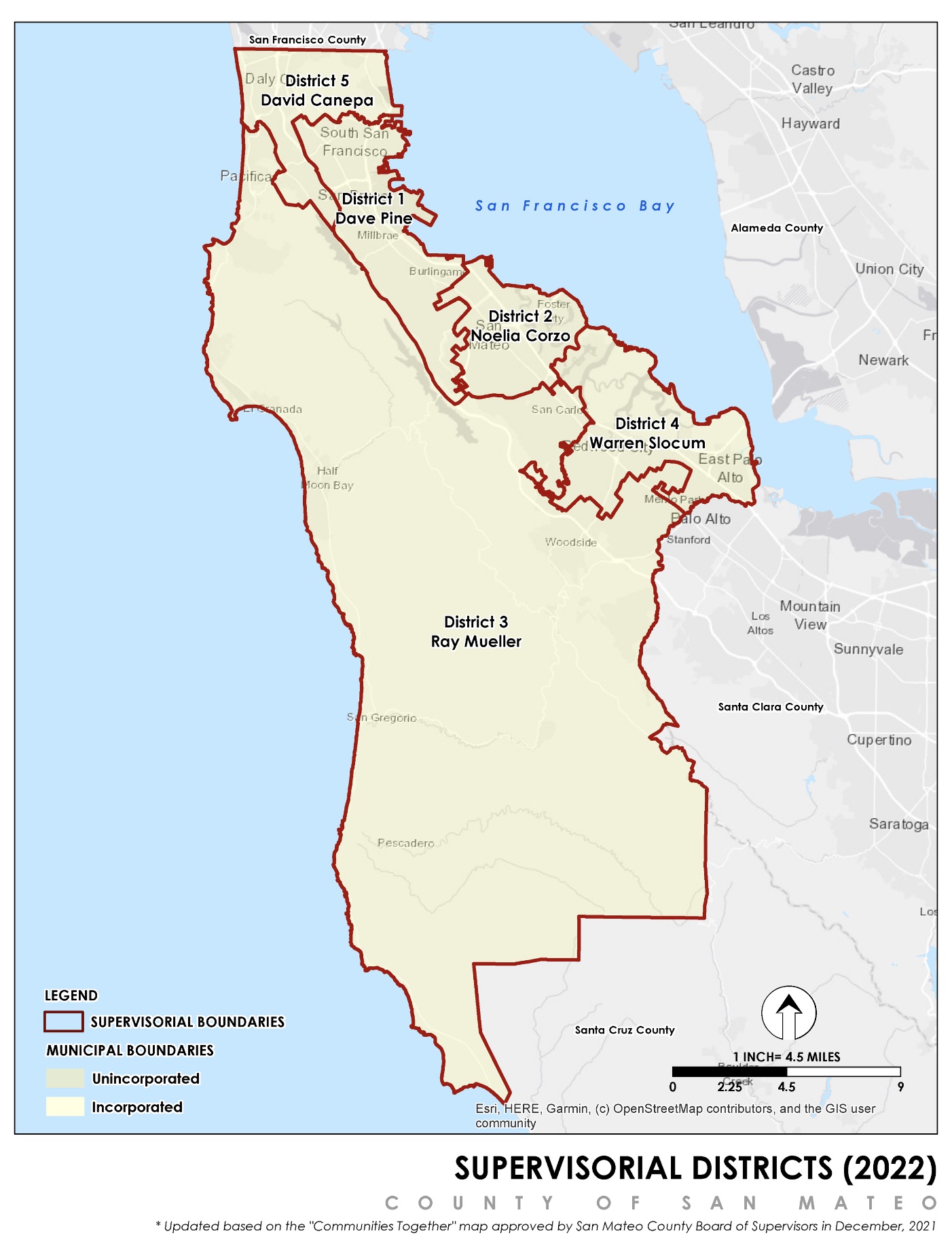|
Getting your Trinity Audio player ready...
|
VIDEO and STAFF REPORT. From the San Mateo County Emergency Services Council Meeting on Thursday, June 15th, 2023 at 5:30pm.
San Mateo County Emergency Services Council Meeting Agenda
Approve allocation of $200,000 in JPA Budgetary Reserves for San Mateo County Coastside Resilient Infrastructure Strategic Plan (CRISP) (San Mateo County Supervisor Ray Mueller)
[pdf-embedder url=”https://www.coastsidebuzz.com/wp-content/uploads/2023/06/20230615_ESC-Meeting-Agenda_FINAL02.pdf” title=”20230615_ESC Meeting Agenda_FINAL02″]
San Mateo County Coastal Resilient Infrastructure Strategic Plan (CRISP) Staff Report
RECOMMENDATION:
Approve the allocation of $200,000 in Emergency Services Joint Powers Authority Budgetary Reserves for the San Mateo County Coastal Resilient Infrastructure Strategic Plan (CRISP).
BACKGROUND
The San Mateo County Coastal Region has been severely impacted by climate change and recent fire and storm events. On multiple occasions, and for extended durations, critical lifeline infrastructure (including but not limited to telecommunications and connectivity infrastructure, and transportation infrastructure) have been compromised or lost. Other infrastructure, including emergency radio communications infrastructure were also nearly lost due to power outages and road failures.
The failure or near failure of this infrastructure ecosystem directly impacts not only the residents of the San Mateo Coast, but also those who work there, those who respond to disasters on the Coast as part of mutual aide, and those who rely on infrastructure on the coast for emergency communications. The entire operational area is severely impacted when lifeline infrastructure is lost on the San Mateo Coast as resources are diverted and sometimes cut off from other regions of the operational area and evacuations may be required.
As a result of the largely unmitigated risks posed by the potential loss of lifeline infrastructure on the Coast, San Mateo County Supervisor Ray Mueller has proposed development of the San Mateo County Coastal Resilient Infrastructure Strategic Plan (CRISP). CRISP would analyze and evaluate Coastal infrastructure and identify areas that should be targeted to strengthen Coastal Resiliency. The results of the analysis and evaluation could then be used to support efforts with businesses, utility providers, and local, regional, state, and federal agencies to prioritize identified needs. The results would also allow emergency management agencies to anticipate, prepare for, and respond to climate-related disasters, safeguard, and secure critical lifeline infrastructure, coordinate multi-agency efforts, engage the community, and achieve long-term risk reduction.
DEM will cross reference the proposed study with the “All-Hazard Evacuation Plan” to ensure that both studies are interoperable and do not study the same potential area.
DISCUSSION
Approval of this item would allocate $200,000 in funding and would enable DEM to issue a Request for Proposals, select, and engage a vendor to initiate the development of the CRISP. DEM will develop the RFP and create a working group, with representatives from the Public Safety, including representatives from the coastside communities, to create the RFP, select the vendor, and award the contract.
The strategic planning process will include but not be limited to the following:
Risk Assessment: The study should start with assessing the potential risks and vulnerabilities specific to the coastal area. This includes analyzing the impacts of climate change, sea-level rise, storm surges, erosion, and other coastal hazards. The assessment helps identify critical infrastructure at risk, vulnerable communities, and natural systems that provide protection or contribute to coastal resilience.
Infrastructure Evaluation: The study evaluates existing infrastructure systems, such as transportation networks, water and sewer systems, power grids, and telecommunications, to identify weaknesses and vulnerabilities. It considers their ability to withstand natural hazards, potential impacts on service delivery, and dependencies between different infrastructure sectors.
Energy and Power Grids: Energy infrastructure, including power generation plants, electrical grids, and fuel supply systems, ensures the provision of electricity to households, hospitals, emergency facilities, and critical infrastructure. A reliable energy supply is vital for maintaining communication systems, supporting medical equipment, providing heating or cooling in extreme weather, and powering emergency response efforts.
Transportation Systems: Transportation infrastructure, including roads, bridges, tunnels, and public transportation networks, plays a crucial role in emergency response and evacuation operations. These systems enable the movement of emergency personnel, supplies, and residents during disasters. Additionally, transportation infrastructure supports the delivery of essential goods and services, such as food, water, and medical supplies, to affected areas.
Telecommunications Networks: Telecommunications infrastructure encompasses the communication systems and networks that enable information exchange during emergencies. This includes telephone lines, cellular networks, internet connectivity, and emergency alert systems. Reliable and resilient telecommunications infrastructure facilitates emergency communication, dissemination of public warnings, coordination among response agencies, and access to information for affected residents.
Public Health Systems: Lifeline infrastructure also includes public health systems, such as hospitals, clinics, emergency medical services, and public health departments. These systems provide critical healthcare services, medical supplies, and emergency response capabilities during disasters. Maintaining the functionality of healthcare infrastructure is crucial for treating injuries, preventing the spread of diseases, and ensuring the well-being of affected individuals.
By safeguarding lifeline infrastructure, emergency management efforts can effectively mitigate and prepare for emergencies, provide critical services to the community, save lives, and support the overall resilience and recovery of affected areas.
For additional information on CRISP see Attachment A (CRISP Background, Supervisor Ray Mueller).








